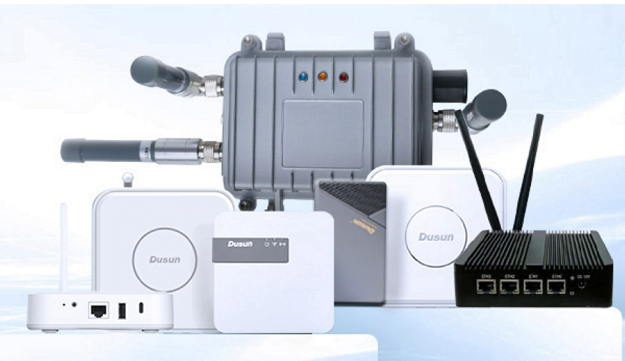Introduction
LoraWAN gateways are designed to communicate over long distances using the LoRaWAN protocol, but how far can they transmit?
LoraWAN gateways can transmit messages over long distances using low power, but that doesn’t mean they are suitable for every application. Created by Semtech, LoRa provides for long-range communications: anywhere from 3 miles (5 kilometers) in urban settings to 10 or more miles (15 kilometers) and beyond in rural areas.
This guide will help you decide how far your LoraWAN gateways can transmit to make the best choice for your project.
What Are Lora Gateways
The LoRa gateway serves as a communication device between end devices and a LoRa network server (LNS) within a LoRa network.
Typically, LoRa gateways are used to transfer sensor data between the cloud and electrical devices.
In areas with technical constraints, we use LoRa gateways to implement relevant electric devices in a network.
This wireless communications method does not use LoRa technology – it only transmits between these two points.
Yet, one key benefit of this type of system is that because there are no intermediate stations involved, communication ranges remain longer, and power usage diminishes significantly – causing much longer battery life.
How Does A Lora Gateway Work?
Gateways for LoRa are radio modules equipped with a LoRa concentrator that receives LoRa packets.
A Lora gateway must transmit information from a Lora end node to the Internet. It converts the signal into an IP packet it sends to its destination.
It also receives data packets from the internet and converts them into signals for Lora end nodes on its network.
A typical Lora gateway transmission range depends on the antenna type used. The signal can travel up to twenty kilometers with an omnidirectional antenna or up to five kilometers with a directional antenna.
How does a LoRa gateway connect to the LoRa Network Server?
LoRa IoT gateways connect to the LoRa Network Server via a serial port and transmit data over an MQTT connection.
LoRa gateways are transparent bridges that convert radio data packets to IP packets and vice versa.
They connect directly to the LoRaWAN network server using standard internet connection types such as Wi-Fi, Hardwired Ethernet, or Cellular.
The Range of Lora
Lora gateways generally have a transmission range of up to 15 kilometers.
However, this depends on several variables and the specifications of the gateways. In an environment with good line-of-sight and no interference from objects like buildings or trees, they may be able to transmit much further than 10km.
On the other hand, if there are any obstacles between the transmitter and receiver, they won’t be able to reach anywhere near 10km. And even if there are no obstacles, heavy rain or snow can interfere with signal quality and shorten the range.
In a research carried out by Yosensi.io to detect the range of LoRa Gateway – the team range-tested several types. They took measurements in a suburban area with a wide range of structures. The signal line traversed woodland, single-family homes, and factories.

Source: Yosensi.io
From the research, It is clear from the diagrams that terrain type affects range greatly. Forests limit the range significantly. The first location was unusual due to its proximity (620 m) to a metal structure. Antennas 5 and 7 are affected by the structure. Transmission parameters were better when traveling longer distances.
Why Do You Need To Know About Range
Knowing the range of a LoRaWAN gateway is important for determining how much coverage your network needs to provide. The range will also determine how many gateways you need to cover the desired area.
For example, if you are building an IoT system in an office, it would likely only require one LoraWAN gateway. Most IoT devices don’t transmit very far and should be close to the LoraGateway.
However, if you are building a system with over 100 miles of wireless transmission distance needed, you may need more than ten gateways to cover that distance properly. In these situations, it becomes even more important to know the max range of each gateway so you can place them in the correct spots.
Factors affecting transmission distance
Distance and interference can impact how far LoraWAN gateways transmit.
The farther the gateway is from the end device, the less power it has to transmit and, therefore, the lower the range.
Interference, such as trees or buildings, can also obstruct a signal’s ability to reach the endpoint. In addition, other devices transmitting on the same frequency can cause interference with both range and data transmission quality.
For example, Wi-Fi routers operate at 2.4 GHz, the same as the Lora frequency of 2.1 GHz, and they could interfere with each other if there is more than one in the area.
Also, Bluetooth operates at 2.4 GHz, so interference may occur when it is used near LoraWAN nodes. Powerline networks use some of the same frequencies, so they may also interfere with each other if they are within proximity of each other.
Microwaves operate at 2.4GHz and above within the bandwidths of Wi-Fi, Bluetooth, and powerline network channels. Additionally, microwaves can interfere with LoraWAN transmissions. Be careful when transmitting signals with a LoraWAN gateway.
How Do I Extend My Lora Range?
The easiest way to extend the range of your LoraWAN gateway is to add more gateways or choose a stronger and better LoRa gateway antenna. If this is not an option, then the best option would be to use an antenna amplifier.
In one of our previous posts, we talked about how to pick a LoRa gateway antenna that will work best for your home and whatever you need. Although this does not work well for all applications, it will help in most cases.
Also, we recommend getting as close to line-of-sight as possible and putting your transmitter on a higher point than the receiver.
Also, if you are a hotspot miner, check out our post on how to place a helium hotspot in your home. With the helium hotspot, you can earn more HNT for transferring device data across the network.
Conclusion
At a maximum range of 10 miles or more miles, LoraWAN gateways are the perfect solution for IoT applications that require a long-range transmission.
These include utility and transportation industry use cases like water and gas pipeline monitoring, power grid management, and city traffic control.
With an average cost per mile at just one-tenth the cost of WiMAX, these gateways make it possible to cover a much wider area with the same budget.



















